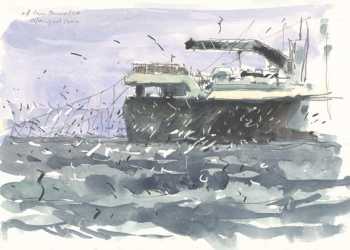The Australian Fisheries Management Authority (AFMA) is reviewing the Great Australian Bight and South East Trawl Fisheries to see if seabird mitigation devices are working. Early advice is that the devices are helping keep birds safely away from the boats' gear.
Each boat has its own customised Seabird Management Plan which sets out a range of devices and measures it must use to reduce the risk of seabirds getting caught in the fishing gear. AFMA, the Australian Antarctic Division, industry members and seabird scientists worked together to develop these Seabird Management Plans.
Many boats adopted seabird mitigation devices before they became mandatory in November 2011 and the industry is now trialling innovative new ways to reduce seabird interactions, such as the water jet boom. Devices currently in use include ‘warp deflectors' or pinkies, which are colourful buoys that sit alongside the trawl gear so that it can be seen. The buoys also act as a physical barrier between birds and fishing gear. Fishing operators also tie brightly coloured streamers to their trawl wires to make them visible and scare away the birds.
The operators take other measures to ensure that they are using best-practice fishing techniques, for example only discarding at the end of a shot and all in one go so that birds have little opportunity to feed off the offal or discards. Fishers also ensure their nets are clean prior to deployment so there is nothing on them to attract birds.

A trawler tows twin bird-scaring lines
Illustration by Bruce Pearson
AFMA consulted with Humane Society International and the Tasmanian Department of Primary Industries, Parks, Water and Environment in developing the review process. The review is due for completion early next year and the report will be available on [the AFMA] website once finalised.
Text taken from the AFMA web site.
John Cooper, ACAP Information Officer, 11 December 2012

 English
English  Français
Français  Español
Español